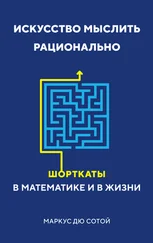Ferguson, T. S. (1989). Who solved the secretary problem? Statistical Science, 4 (3), 282–89. https://doi.org/10.1214/ss/1177012493 Gilbert, J. P., & Mosteller, F. (1966). Recognizing the maximum of a sequence. Journal of the American Statistical Association, 61 (313), 35. https://doi.org/10.2307/2283044
Keep calm and carry on (англ.).
Обыгрывается созвучие – Keep calm and curry on и Keep calm and carry one. – Прим. пер.
Fiebelkorn, A. P., Redd, S. B., Gastanaduy, P. A., Clemmons, N., Rota, P. A., Rota, J. S., Wallace, G. S. (2017). A comparison of postelimination measles epidemiology in the United States, 2009–2014 versus 2001–2008. Journal of the Pediatric Infectious Diseases Society, 6 (1), 40–48. https://doi.org/10.1093/jpids/piv080
Jenner, E. (1798). An inquiry into the causes and effects of the variolae vaccinae, a disease discovered in some of the western counties of England, particularly Gloucestershire, and known by the name of the cow pox. (Ed. S. Low).
Октавий был последним членом королевской семьи Великобритании, умершим от оспы. Членов королевской семьи начали прививать (вариолировать) от оспы еще при прапрадеде Октавия, Георге I, в начале XVIII в. – Прим. пер.
Booth, J. (1977). A short history of blood pressure measurement. Proceedings of the Royal Society of Medicine, 70 (11), 793–9.
Bernoulli, D., & Blower, S. (2004). An attempt at a new analysis of the mortality caused by smallpox and of the advantages of inoculation to prevent it. Reviews in Medical Virology, 14 (5), 275–88. https://doi.org/10.1002/rmv.443
Таблица смертности (таблица дожития) – упорядоченный по возрасту ряд чисел, характеризующий порядок вымирания поколения людей, один из важнейших инструментов демографической статистики. – Прим. пер
Hays, J. N. (2005). Epidemics and Pandemics: Their Impacts on Human History. ABC–CLIO.
Watts, S. (1999). British development policies and malaria in India 1897–c.1929. Past & Present, 165 (1), 141–81. https://doi.org/10.1093/past/165.1.141
Harrison, M. (1998). ‘Hot beds of disease’: malaria and civilization in nineteenth-century British India. Parassitologia, 40 (1–2), 11–18. Retrieved from http://www.ncbi.nlm.nih.gov/pubmed/9653727
Mushtaq, M. U. (2009). Public health in British India: a brief account of the history of medical services and disease prevention in colonial India. Indian Journal of Community Medicine: Official Publication of Indian Association of Preventive & Social Medicine, 34 (1), 6–14. https://doi.org/10.4103/0970–0218.45369
Simpson, W. J. (2010). A Treatise on Plague Dealing with the Historical, Epidemiological, Clinical, Therapeutic and Preventive Aspects of the Disease. Cambridge University Press. https://doi.org/10.1017/CBO9780511710773
Kermack, W. O., & McKendrick, A. G. (1927). A contribution to the mathematical theory of epidemics. Proceedings of the Royal Society A: Mathematical, Physical and Engineering Sciences, 115 (772), 700–721. https://doi.org/10.1098/rspa.1927.0118
Susceptibles, infectives, removed (англ.) – восприимчивые, инфицированные, выбывшие.
Презентеизм – многозначный термин, включающий в себя разнообразные понятия от постоянной переработки до присутствия на рабочем месте в болезненном и малопродуктивном состоянии. – Прим. пер.
Нулевой трудовой договор – либо трудовой договор с почасовой оплатой, либо договор, по которому работодатель не гарантирует работнику постоянной занятости. – Прим. пер.
«Сдельная» экономика – экономика постиндустриального (информационного) общества, в котором преобладают «свободные агенты» – фрилансеры, внештатные работники, аутсорсинг и т. д. – Прим. пер.
Hall, A. J., Wikswo, M. E., Pringle, K., Gould, L. H., Parashar, U. D. (2014). Vital signs: food-borne norovirus outbreaks – United States, 2009–2012. MMWR. Morbidity and Mortality Weekly Report, 63 (22), 491–5.
Murray, J. D. (2002). Mathematical Biology I: An Introduction. Springer.
HPV – вирус папилломы человека, ВПЧ. – Прим. пер.
Bosch, F. X., Manos, M. M., Munoz, N., Sherman, M., Jansen, A. M., Peto, J., Shah, K. V. (1995). Prevalence of human papillomavirus in cervical cancer: a worldwide perspective. International Biological Study on Cervical Cancer (IBSCC) Study Group. Journal of the National Cancer Institute, 87 (11), 796–802.
Gavillon, N., Vervaet, H., Derniaux, E., Terrosi, P., Graesslin, O., & Quereux, C. (2010). Papillomavirus humain (HPV): comment ai-jeattrapé ça? Gynécologie Obstétrique & Fertilité, 38 (3), 199–204. https://doi.org/10.1016/J.GYOBFE.2010.01.003
Jit, M., Choi, Y. H., & Edmunds, W. J. (2008). Economic evaluation of human papillomavirus vaccination in the United Kingdom. BMJ (Clinical Research Ed.), 337, a769. https://doi.org/10.1136/bmj.a769
Zechmeister, I., Blasio, B. F. de, Garnett, G., Neilson, A. R., & Siebert, U. (2009). Cost-effectiveness analysis of human papillomavirus-vaccination programs to prevent cervical cancer in Austria. Vaccine, 27 (37), 5133–41. https://doi.org/10.1016/J.VACCINE.2009.06.039
Kohli, M., Ferko, N., Martin, A., Franco, E. L., Jenkins, D., Gallivan, S., Drummond, M. (2007). Estimating the long-term impact of a prophylactic human papillomavirus 16/18 vaccine on the burden of cervical cancer in the UK. British Journal of Cancer, 96 (1), 143–50. https://doi.org/10.1038/sj.bjc.6603501
Kulasingam, S. L., Benard, S., Barnabas, R. V, Largeron, N., & Myers, E. R. (2008). Adding a quadrivalent human papillomavirus vaccine to the UK cervical cancer screening programme: a cost-effectiveness analysis. Cost Effectiveness and Resource Allocation, 6 (1), 4. https://doi.org/10.1186/1478–7547–6–4
Dasbach, E., Insinga, R., & Elbasha, E. (2008). The epidemiological and economic impact of a quadrivalent human papillomavirus vaccine (6/11/16/18) in the UK. BJOG: An International Journal of Obstetrics & Gynaecology, 115 (8), 947–56. https://doi.org/10.1111/j.1471–0528.2008.01743.x
Hibbitts, S. (2009). Should boys receive the human papillomavirus vaccine? Yes. BMJ, 339, b4928. https://doi.org/10.1136/BMJ.B4928
Читать дальше
Конец ознакомительного отрывка
Купить книгу
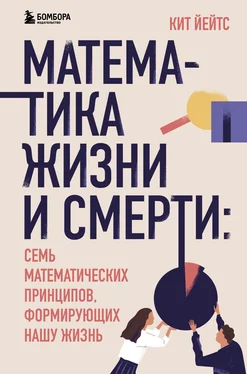

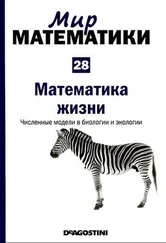

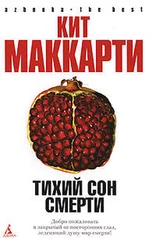
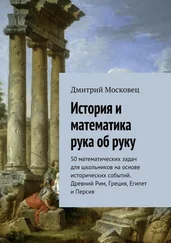

![Роб Истуэй - Математика на ходу [Более 100 математических игр для больших и маленьких] [litres]](/books/406847/rob-istuej-matematika-na-hodu-bolee-100-matematich-thumb.webp)

